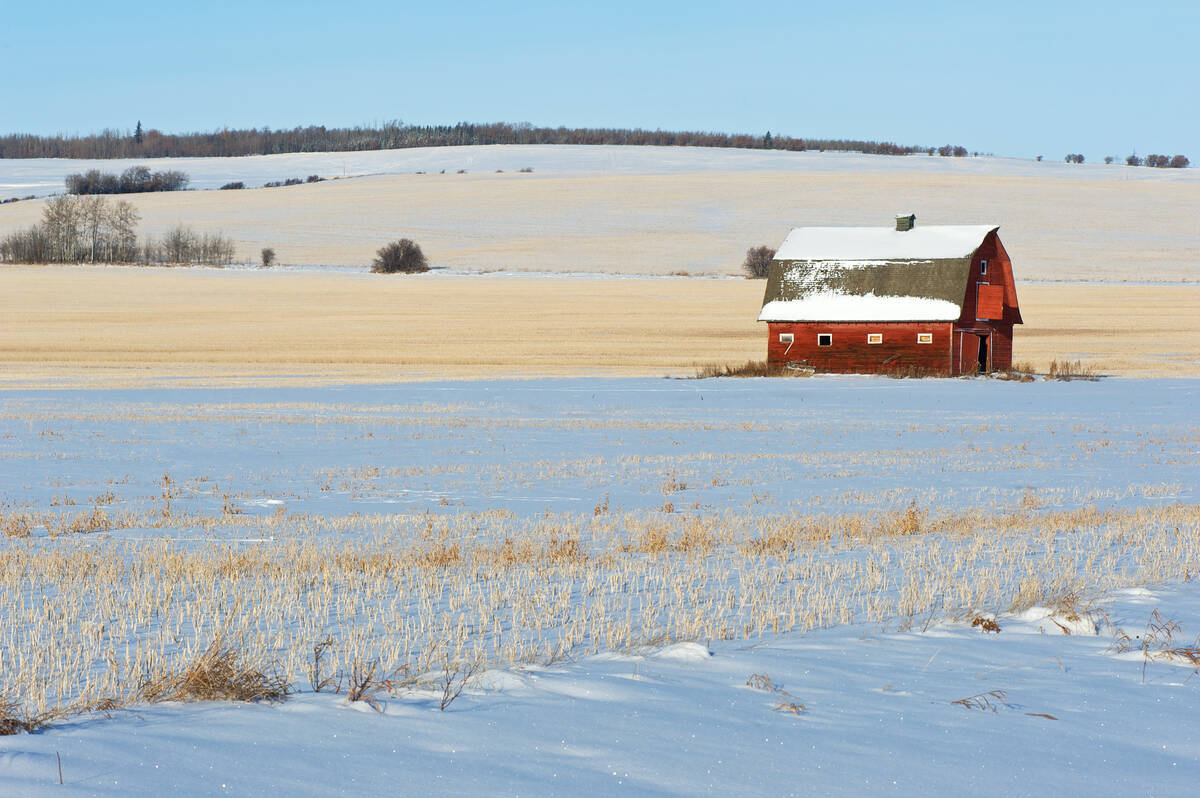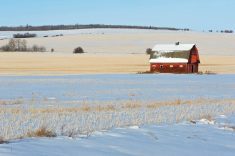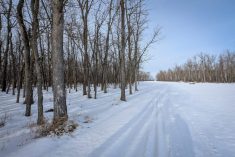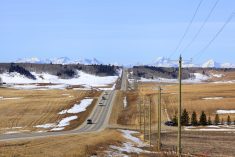CNS Canada — Dry conditions in southern Saskatchewan are cause for vigilance, but rain could still pull out a healthy harvest, according to a provincial soil and nutrient specialist.
The area of concern lies within a triangle shape, with the northern tip at Saskatoon, one arm stretching southeast to Weyburn, Estevan and the U.S. border, and the other stretching southwest to Swift Current, Maple Creek and the U.S. border.
“That is the area that is short to very short in moisture,” said Patrick Mooleki, who works out of the provincial Agriculture Knowledge Centre in Moose Jaw.
Read Also

Prairie forecast: Plenty more chances for snow over Holidays
The pattern of Pacific storm system after Pacific storm system looks set to continue for a while longer. We begin this forecast period with a heavy snowfall warning in effect across parts of Alberta.
Areas of the province that escaped the dryness include the eastern side of the province and the grainbelt north of Saskatoon.
There have been only a few reports of crop damage so far, he said, but rain is needed soon or that may change.
“It isn’t really showing crop damage as such, but it is showing significant signals.”
As July’s big growth season kicks in, he said, many plants could struggle and be less lush, though they may not show signs of wilting. Still, yields would be affected.
As well, he said, some fields show uneven development, which makes herbicide timing difficult.
“We hate to use the word ‘drought’ unless we have really severe drought,” he said, adding that the dry region of Saskatchewan is some ways away from drought yet because there is still hope that rain could turn the situation around.
“Plants can hold on unless it doesn’t rain. But we haven’t reached that stage yet.”
Many areas went into fall with adequate or surplus soil moisture and that has helped plants survive, he said.
As well, the weather has been relatively cool so far, which has helped conserve moisture. Lately, however, wind and warmer temperatures have been adding to the dryness.
“So we might be running into real significant issues if we don’t get the precipitation we should get.”
“It’s all crops that are affected. There is no crop that is spared.”
Soil moisture on Alberta cropland is at least adequate in most regions outside of a corridor stretching from Lethbridge to Calgary, said Daniel Itenfisu, a drought modeler for Alberta Agriculture in Edmonton.
“It is low to moderately low (in the Lethbridge-to-Calgary corridor) but for the rest of the southern region it is moderately normal,” he said.
Soil conditions in the rest of cropland in the south, as well as in the rest of the province, range from adequate to high moisture, he said.
Pastures with sandy soils are a different matter, he added. “They are stressed more due to the hot weather conditions.”
Rain is still needed and if it doesn’t arrive soon, crops could be damaged, he said.
“Soil moisture could change with a good rain. Overnight it could be replenished and maybe you’ll see a different condition.
“It’s time. (Plants) like the hot weather but what is going to be the limiting factor is only the rainfall.”
Manitoba is arguably in the best shape of the three Prairie provinces and is in more of a wait-and-see situation.
While dry pockets exist in the province’s southwest, nobody is yet raising alarms.
“We haven’t seen negative effects because of dry weather. We just know that crops could benefit from rain,” said Anne Kirk of Manitoba Agriculture.
Precipitation in the southwest is 70 per cent of normal and rain was expected this week. She added that some rain fell last night, but she hadn’t yet seen reports on whether it had any effect.
“So far, rain has been pretty variable.”
Throughout the rest of the province, however, Manitoba growers appear to be having a good year. The exception is The Pas, in the far northwestern growing region, where fields remain sodden.
“Across most of the province, crops are looking very good,” Kirk said.
Crops more suited for cooler temperatures, such as cereals and canola, were faring especially well, she said.
Warmer-season crops such as soybeans and corn went through a growth burst last week as temperatures climbed, she said.
As to the dryness in the southwest, Kirk is not sure if, or when, growers might start to see problems if no rain arrives. For now, soil moisture is adequate.
“We’re not seeing damage as of yet and we’re not sure when conditions might become a problem.”
— Terry Fries writes for Commodity News Service Canada, a Winnipeg company specializing in grain and commodity market reporting. Follow CNS Canada at @CNSCanada on Twitter.















